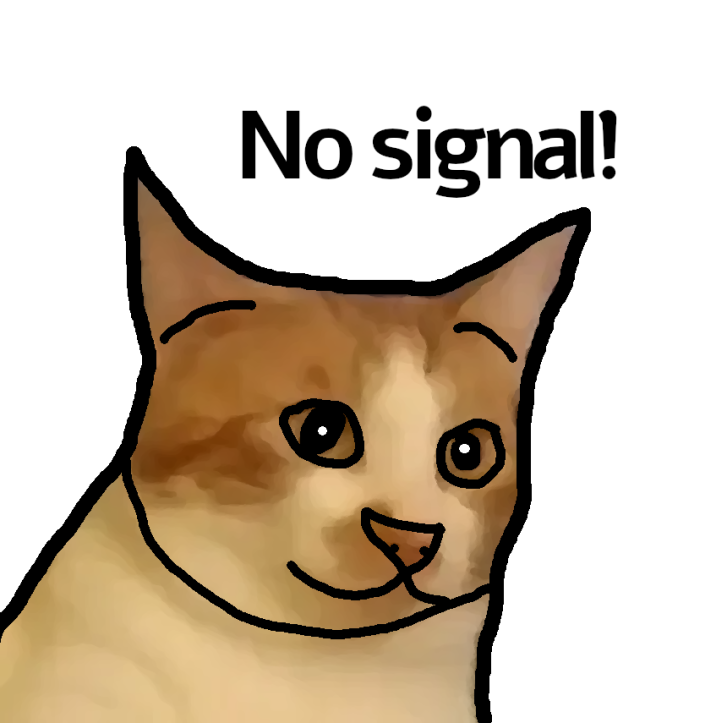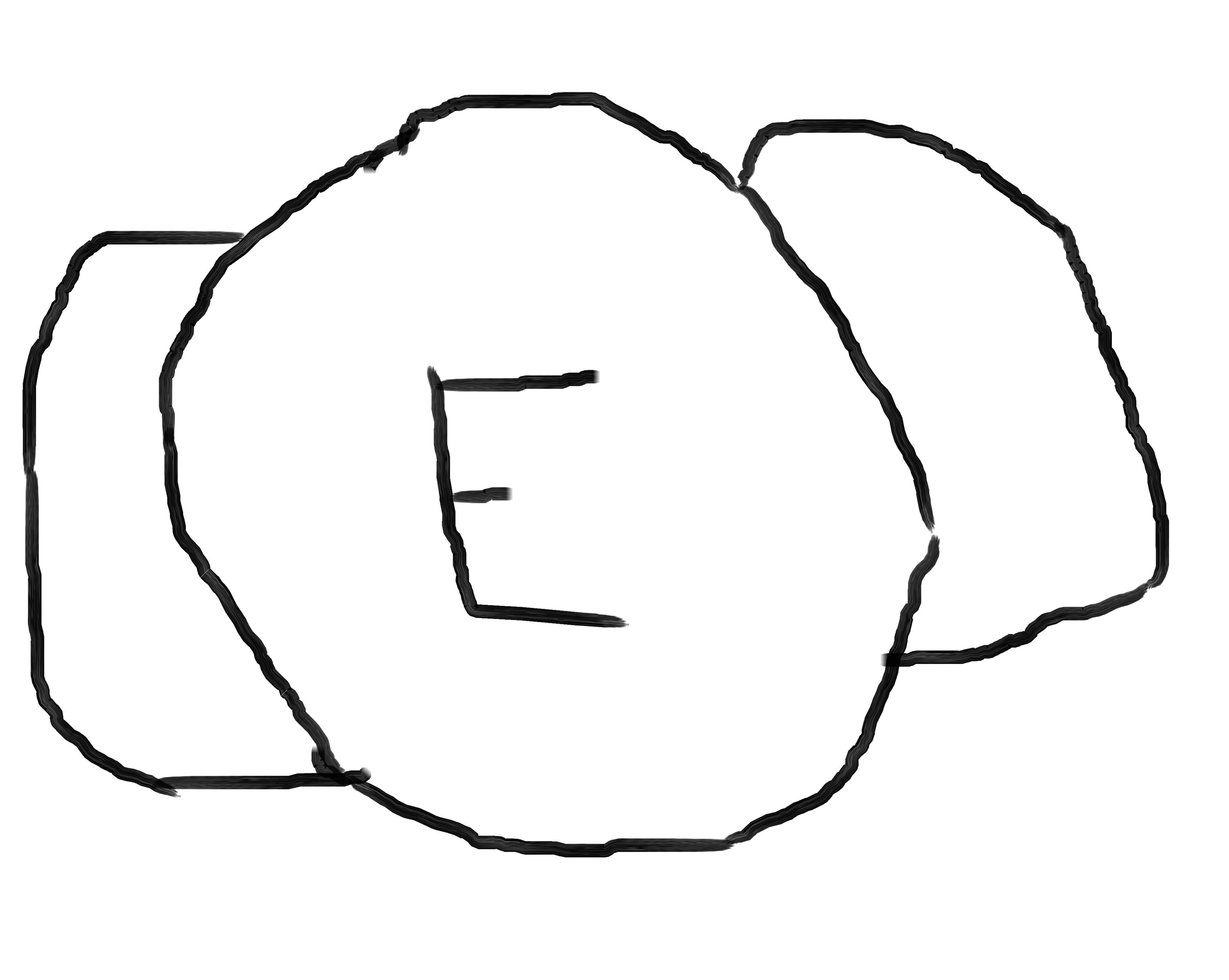I understand why this is wrong (order of operations dictates the division happens first, so it’s really 25 - 1 = 24), but why is it funny? I don’t mean “This isn’t funny,” I think I’m just missing the joke.
4! Is meant to be 4 factorial. 4! = 4 x 3 x 2 x 1 = 24
Aha! Got it, thank you so much.
And here I was thinking I was still decent at math. I got bamboozled…
Everybody forgets the factorial…
I always get a chuckle every time someone posted this in an unrelated comment.
Especially when we have never seen that shit before
Or if you don’t know order of operations, then you probably also don’t know factorials, so 20 / 5 = 4
The fuck is a “factorial”? They didn’t teach me that one in high school math and I couldn’t afford college.
Im sorry your highschool curriculum failed to teach you. I learned factorals in jr highschool
4 factorial (written as 4!) is 4•3•2•1
I think this example explains it perfectly lol
Edit: using • instead of * to avoid markdown
Just a small correction in case you didn’t know, but your answer shows as 432*1 because Lemmy formats text wrapped by * as italic, so it thinks you want to italicize the 3. You meant to write 4*3*2*1 (written as 4\*3\*2\*1). This is because \ is an escape character that tells lemmy not to take the * as a formatting character.
Right, i sometimes forget about markdown lol. Yeah, it obviously is 4•3•2•1
Is a factoral just 1X Because yeah i don’t think I learned that either, but I was taught exponentiation. Whats the value of factorals?
Factorial means n! = (n)(n-1)(n-2)… etc. down to 1, where n is a positive integer. It’s used to calculate the different number of configurations of a set of elements, mainly in combinatorics.
Like if you have four different objects and you want to know how many different configurations you can order them in, you have four choices for the first object, then three for the second, then two for the third, then one for the final slot. So the answer is 4 x 3 x 2 x 1 = 24 = 4!.
What’s the point of factorials?
They’re used in permutations and combinations a lot. Combinations is pretty obvious based on the name. Given X things, how many ways are there to choose Y. Permutations are the same but where order matters.
For example, if you shuffle a deck of cards properly randomly there will be 52! possible orderings (permutations).
the most tangible and direct application is how many different ways you can order x many items.
eg. how many different ways can you order 3 items?
let’s say you have these 3 items: 🍏🫐🍒
the first one can be any one of the three, so you have 3 options. that’s 3 different ways to start your order. let’s write that down:
3
now for the second one. whichever one you picked for first position will be unavailable, so you’ll have 2 options this time. this is true for each first pick separately, so you multiply the possible number of first picks by the possible number of second picks:
3 x 2
now for the third item, since two of the three are already picked, you only have one left, which means not much to choose. you just multiply the 1:
3 x 2 x 1
of course multiplying by 1 doesn’t change anything but as we mentioned there was no option this time, once you pick the second fruit the third is also auto-picked, so the third item doesn’t add to our number.
so the final answer seems to be:
3 x 2 x 1 = 6
is that true? might feel like there should be more ways but let’s test it; can’t be that complicated:
- 🍏🫐🍒
- 🍏🍒🫐
- 🫐🍏🍒
- 🫐🍒🍏
- 🍒🍏🫐
- 🍒🫐🍏
here you go. you can extrapolate this logic to any number. four items would’ve followed the same sequence starting with 4 and have 1 less option with each pick, so 4 x 3 x 2 x 1. and that’s also 4!
There are lots of applications, so I’ll give you three
Factorials are used in the Taylor Series to approximate trigonometric (sine, cosine, etc) and the exponential function. This can help speed up calculations.
In probability and statistics, if you want to find how many different ways a deck of cards can be shuffled, the answer is 52! Because the first card can be any of the 52, the second can be any of the remaining 51, and so on until the last card. Building upon this concept results in ways to model data like the binomial distribution , which is simply “how many successes will i get if i do this trial a certain number of times”. E.g. If I flip a coin 100 times, how many times will it be heads?
In computer science, the complexity of a program is compared to functions like the factorial, exponential, quadratic, etc. to visualize it’s performance given the size of the input, n. E.g. a program of linear time complexity is denoted as O(n), and as n increases, we expect the time for the program to finish to increase linearly. For a factorial time complexity, O(n!), we expect the time to complete to increase a lot compared to O(n)
Makes things shorter.
In the applications mentioned by other people, you run into calculations that would look really messy and confusing. Things like 5•4•3•2•1 can be shorted to just 5! Imagine writing the full version of 123!
You didn’t learn factorials in high school?
In High School education, Factorials are generally part of the curriculum, but they’re one of those things you get one section on, it shows up on one test, then in common usage, you never see it again. In many schools, someone could have been out for a day, gotten two answers wrong on a test, and never have known it. Then in my school, unless you were heading on a math track, you’d hardly even touch Calculus to see it actually used anywhere.
4! Is a factorial which means it’s 4 x 3 x 2 x 1 = 24
Totally missed that. Thank you.
4 factorial
The exclamation point denotes the factorial function. 4! = 4 ⋅ 3 ⋅ 2 ⋅ 1
I see no one has explained yet, so I’ll give it a shot. He is excited about math, and that needs to be encouraged.
The exclamation point makes it right. The formula, when worked with proper order of operations, equals 24, which is equal to 4 factorial (4!) 1 * 2 * 3 * 4=24
Cause math people has a weird humor?

The exclamation point in the answer, from a math perspective, makes it 4 factorial: 4 x 3 x 2 x 1 = 24, which is the correct answer.
Could it be you’re responding to the wrong person?
Indeed, it could.
Sorry to said that, but you made my guess quite real.

Best math meme so far.
deleted by creator
Unexpected expected factorial
deleted by creator
Except it is correct. 4!=24
deleted by creator
ASCII hack failure of language. Even in mathematics, ! has multiple meanings like with Boolean NOT. We need a science, math, and language reformation to remove non intuitive narcissistic names, and implied contextual meanings.
You might find Lojban interesting if you are not already aware. (I haven’t tried to learn it myself, I just know it exists)
Relevant xkcd
If someone wants to start a Lojban pun community, I would definitely subscribe just to learn about Lojban.
Although, if no one posted in the community, I wouldn’t be sure if it was a perfectly logical language or the community was just dead.
.i la lojban cu mutce lo ka smuske tinsa .i ku’i ly. na logji prane pe’i .i loi jbopre cu piso’iroi da’asnu lo ka prane nitcu .i ru’a lo klamburi cu na’e lojbo ka’u .i jy. xebni lo malgli .iseju lo nu lojbo klamburi zbasu cu nandu ba’a jeku’i cumki
Lojban is very semantically rigid, but not perfectly logical IMO. Lojbanists often argue about the necessity of logical perfection. I suspect that puns might not be seen as culturally Lojbanic. Lojbanists hate Anglicisms or bits of English leaking into the way they speak Lojban. Regardless, making Lojbanic puns might be difficult but it’s possible.
I believe you mean, “nice pun!”
I’ve never seen ! used for boolean NOT in maths, just ¬. I think ! is something programming languages went for because it’s easier to type. That said, screw (a, b). Is that a (coordinate) pair, an interval, an inner product, some secret fourth thing? Who knows!
Inner products are written as ⟨a,b⟩, no? Fair point on the interval, tho
Comment section full of people looking for an opportunity to argue
No it isn’t
Yes it is
Wait, will this be the 5-minute or the half hour?
“I’m sorry, I cannot continue to argue, unless you pay.”
You’re not arguing, you’re just being contrary!
Hah, joke’s on you, I just need 4!
WHAT!
You got the wrong symbol in the headline, it should be >3
Ok this is funny
This is quite possibly the best maths joke I’ve ever seen.
[edit] I guess it still can’t beat the ‘be rational’ / ‘get real’ one.
Thank God this meme is muted
Clever! lol
for those that didn’t get it: clever factorial = brilliant
I’m only going to say this once but if I’m doing a sum and you want me to do it in a specific order, use brackets. That’s what brackets are for. Don’t expect me to do things in a predetermined order because I literally can’t be bothered and I will never care enough to do that. I’m already doing a sum so don’t push it, okay bud
But that’s a bit like saying “If you’re going to talk to me, put the adjectives before the nouns,” even in Spanish where they come after. Mathematical notation is a language and it has a syntax. Sure, you can decide to ignore that syntax, or insist that people modify their use of it for you, but it’s not really a reasonable expectation.
I think this is very stupid for a number of reasons. Why is there an order of operations that supersedes the direction the operations are written in? That’s at best dim witted and at worst deliberately misleading. Grog write left to right. Grog read left to right. Grog do sum left to right.
There is absolutely no reason in the world why anybody should have to know that division comes before subtraction. That’s fucking insane, man. What is the point of writing things down if you’re only going to do them in a set order anyway? May as well have a big jumble of letters and numbers and symbols on the page at that point, like who cares. The whole point of writing things down is to express concepts. Can’t do that with any kind of nuance if you’re going to read it one way anyway, no matter how you write it down. That would be like saying you always pronounce certain letters at the start of words even if they’re in the middle. Completely nuts.
If all people did was simple equations like the one in the OP, you’d probably be right, but math syntax has to deal with all kinds of equations. Your way, I can’t write 3x^2–4x+5. Instead, I’d have to write ((((3x)^2)−4)x)+5. That’s WAY more obnoxious. It’s better to have an unambiguous syntax that covers all the cases and lets me write equations in an more simple form.
Grog write left to right.
Gorg is from another country and writes right to left.
Grog read left to right.
Gorg reads right to left
Grog do sum left to right
Gorg does sums right to left
well then you should stop doing math cuz you’re doing it wrong
Thanks I take enormous pleasure in never doing any maths at all ever, largely for reasons like this 😌
Jokes and tricks that hinge on unclear communication (eg: not using parenthesis or other notation to make intent clear), and then are smug when people are tricked, remind me of the old xkcd https://xkcd.com/169/
I just saw some jokes about factorials so at least I got this one, heh.
Sorry but what is unclear in OPs image?
25 - 5 ÷ 5when read naively left to right looks like it would be “25 - 5 = 20. Then take that and divide by 5, for an answer of 4”. It would be clearer to write it as(25 - 5) ÷ 5or25 - (5 ÷ 5)depending on what’s intended.You see those kind of “gotcha!” posts online sometimes, where someone posts a problem that tempts you into doing order of operations wrong.
Someone who sees how to do it correctly immediately and thinks everyone knows that is invited to view https://xkcd.com/2501/ as well.
Natively? It’s a math equation there is only one way to read it as far as I am aware.
Reread
Hear hear
Naively, not natively. Someone who wasn’t a good math student, or just doesn’t remember, might read it left to right and come to the wrong conclusion. The rules for order-of-operations are, so far as I know, arbitrary, and different people coming at it without instruction (ie: naively) could arrive at different conclusions. Knowing that you’re supposed to do division first isn’t obvious.
You could read
25 - 5 ÷ 5as “25 - 5 is 20. 20 divided by 5 is 4” or you could read it (correct, per the standard rules) as “25 minus… hold on… 5 divided by 5 is one. Now 25 subtract that from the 25 sitting over there, and get 24.” This isn’t the same kind of error as, like, “5 divided by 5 is 0”You could read
25 - 5 ÷ 5as "25 - 5 is 20.You could. You could also lower your pants and drop a massive turd and call that the answer. Both answers would be equally wrong.
PEMDAS isn’t a suggestion that you follow when it suits you, like religion. It’s how math is communicated, unambiguously.
In any case, if that’s where we lost you, then I’ve calculated the chance of you catching the factorial as √-1.
You’re being weirdly aggressive, but okay.
Most people know the symbols for addition subtraction multiplication and division. Far fewer people know the established order of operations. That’s what powers those “only 3% of people solve this problem correctly!” math memes.
But okay. Communicate badly (ie: by failing to acknowledge your audience’s context) and be smug if you want.
You do realize your “You’re communicating badly” attitude is the only smugness happening here, right?
Oh you’re gonna love my other reply then.
Don’t expect me to pander to willful ignorance. If you’re going to act like an idiot, expect to be treated like one.
Also, what’s with the passive aggressiveness? I understand that my confrontational approach there can make some people uncomfortable, but it’s my prerogative.
On the extremely rare occasion when I have the misfortune to be performing a mathematical calculation, I take enormous pleasure in carrying out the operations exclusively left to right unless indicated otherwise by brackets, which is the correct way to indicate this. If you want me to do a calculation separately, put brackets around it or bugger off. It’s your choice, really
Many of the things we believe about ourselves and our experiences turn out to be false. Sometimes this is due to innocent memory failures or to the lack of needed information.
Suppose that Charles believes that he failed his biology test because the professor asked obscure and ambiguous questions.
Charles believes this because he doesn’t realize that he got the lowest score out of the 100 students who took the test, and that most people did quite well.
If Charles had this information, he would realize that he failed the test because he didn’t study hard enough, or because he’s not very good at biology.On the other hand, if Charles continues to believe that the test was unfair after seeing the grade distribution, he is either severely challenged in his capacity for rational calculation or he is the perpetrator of willful ignorance.
Which is it?
unless indicated otherwise by brackets, which is the correct way to indicate this
No it isn’t. The order of operations rules are at least 200 years older than the use of Brackets in Maths. Not sure how you think Maths was done before we started using Brackets.
put brackets around it or bugger off.
Bugger off with your disinformation. There are no Maths textbooks which use Brackets for such a basic expression. Students are expected to know the order of operations rules
The rules for order-of-operations are, so far as I know, arbitrary
No, they’re not.
Knowing that you’re supposed to do division first isn’t obvious.
It is if you’ve been to school or read a Maths textbook
correct, per the standard rules
The only rules
Hey, Munroe is a rather cool and very intelligent engineer. Very witty writer, and awful at drawing. But his philosophy is mid at best. He is not an authority, and is often wrong or common place when it comes to social topics and human affairs. He understands communication in a very techy engineering dimension. There’s no need to take his comics as anything but what they are. One white dude’s anecdotic commentary on his own very limited experience of the human condition. He knows squat about human communication, sociology, psychology or postmodernism.
People don’t read math like that tho, as you learn the order of operations in year 2. Also, the original post is correct,
25 - 5/5 = 4!How would this work out in a rtl language? Because the reader would be used to parsing language in the opposite direction. Does that mean the same equation has two objectively correct answers?
deleted by creator
Promptly Evacuate Manure Drain And Septic
The answer in the comic is correct. It’s just written in a way to make you as the reader think he’s got it wrong for a second.
The ! operator in mathematics indicates a function called a factorial. Four factorial, or 4! = 4 × 3 × 2 × 1 = 24. Which is the correct answer if you follow the proper order of operations.
25 - ⁵/₅ = 25 - 1 = 24
If you wrote it vertically:
25 - 5
————— = 4
5But once you lay it out on one line, you have to use prins to prioritize addition / subtraction:
(25 - 5) / 5 = 20 / 5 = 4
Some YouTube mathematicians deep-dive into this.
ETA: Nothing goes over my head! My reflexes are too fast, I would catch it.
The joke is 4! (Factorial) Is 24 so it looks right even if you do order of operations incorrectly.
Ok so I’m not dumb! Usually I am with math but I got this one. Go me!
Yeah and 24 = 4 factorial = 4!



























